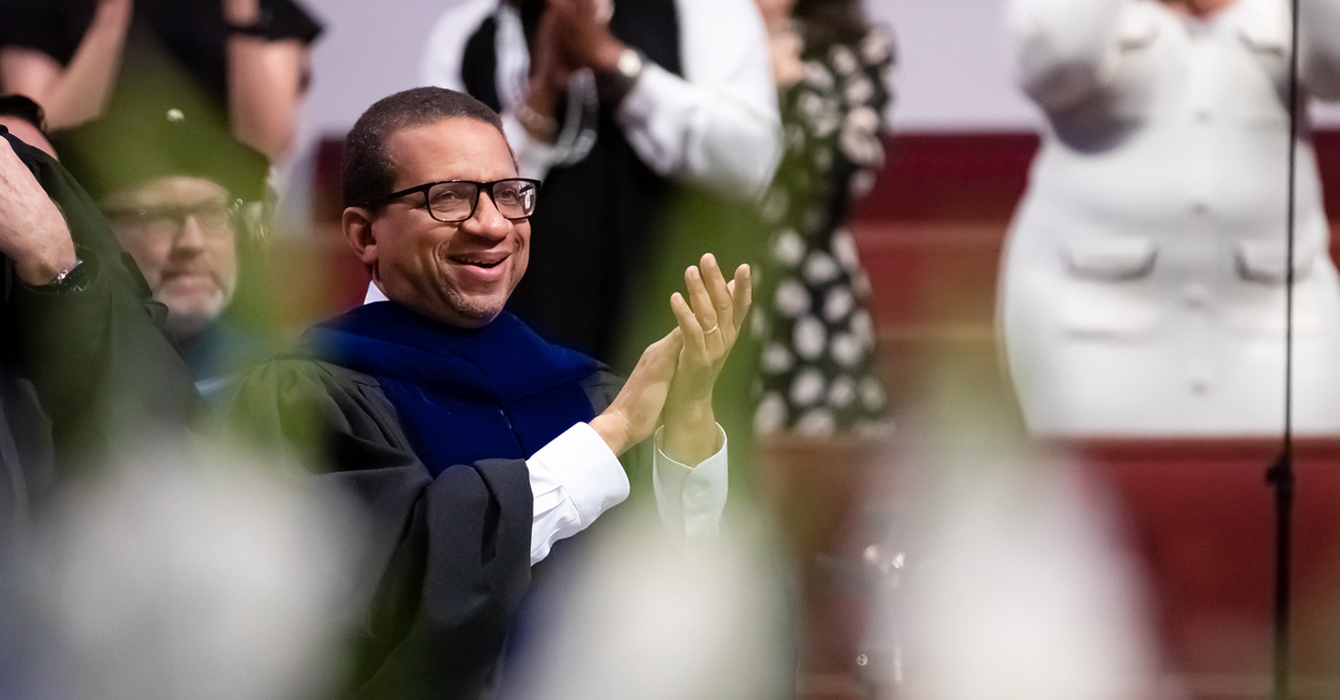“This was a total accident. We had no master plan.”
So says one of the wisest and warmest-hearted leaders I’ve ever met: Zablon N’Thamburi. Formerly the presiding bishop of the Methodist Church in Kenya, N’Thamburi until recently directed external relations for Kenya Methodist University (KeMU). Born out of the Methodist Training Institute in 1997, KeMU had from its founding a vibrant, liberal-arts style campus in Meru, several hours from Kenya’s capital, Nairobi. Like most missionary churches, now indigenous, the Methodists built their university far from the bustle of the city where students could study serenely.
Then something happened.
The school had modest plans to expand to Nairobi. They were going to offer a extension courses to a few dozen students on the city’s outskirts. At the last second their location fell through. They scrambled, and the best they could come up with was a high-rise on a busy roundabout at the heart of the capital, one of East Africa’s busiest banking hubs. It was, in short, anything but serene.
Little did they know, it was also perfect. Being on that site gave them visibility to downtown commuters -- “middle class people,” N’Thamburi says, those who work day jobs in the city and want to take classes in the evenings. In Kenya, the very elite students are admitted to public schools such as the University of Nairobi and granted full scholarships. For everyone else, private schools are the only option, and as a result, KeMU has a certain “of the people” quality. For KeMu, the expansion from Meru to Nairobi worked. Suddenly KeMU couldn’t offer enough courses in business and management. KeMU opened its Nairobi campus in 2007 and already has more than 5,000 students. In just three years! The University has used the income generated by that expansion to open new campuses elsewhere in Kenya: in Nyeri, Nakuru and Mombasa, and plans to open a campus in Juba, Southern Sudan, later this year.
You might wonder if anything is still Methodist about KeMU. One of the two high-rises it occupies (one it owns, the other rented) has an enormous photo of a headscarf-clad Muslim student, appropriately enough in a country with a large Muslim minority. Offering so many business classes to all-comers is an effort to be attentive to the context in Nairobi, N’Thamburi told me. The original campus in Meru has many more theology offerings since so many pastors are trained there. The new campus envisioned for Juba will offer what the Sudanese are telling KeMU they want: health sciences, education, and yes, business. That’s just to kick things off. “We’ll get to know the people on the ground and then hear their interest,” N’Thamburi said. This is a missional approach to education: gauge what the setting needs in both religious and secular leadership and then offer education that meets and surpasses those needs. Further, students at KeMU all have to take a course in Christian Belief, and many participate in student-led worship.
I love both halves to this story: both the accidental nature of KeMU’s blowing up big in Nairobi, and then its eagerness to double down on that growth and expand elsewhere. Who can say where we’ll bump into opportunity, totally unplanned, even by accident? KeMU showed that there’s a hunger for education in downtown Nairobi -- and now competitors (most church-based) have sprung up on every corner not already occupied by KeMU. I also love the haste with which they’ve tried to replicate that growth. No multi-decade plan here, no endowment carefully in place in advance, they’re just opening new campuses, offering what they hear is needed and going for it. Here at Duke we think of ourselves as the upstart university, much younger than the Ivy’s with our 1920s founding, willing therefore to have “outrageous ambition” and take risks. Clearly we have a thing or two to learn about risk and ambition from our sister university in East Africa.
Clearly vibrant institutions have to do as KeMU has done and seize a surprising opportunity even when it comes from an unexpected quarter. And then they have to be willing to pour energy and resources into expanding that opportunity. This has to be done in a missionally savvy way, faithful to the institution’s heritage yet doing a new thing.
And lo and behold they’ll come.







